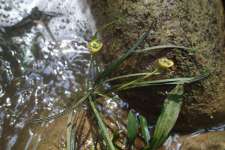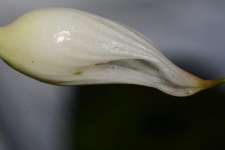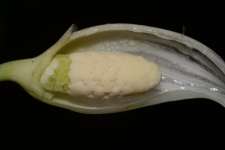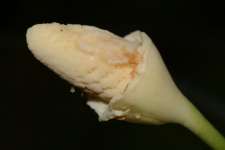 IAS on Facebook IAS on Facebook
 IAS on Instagram IAS on Instagram

|

IAS Aroid Quasi Forum
About Aroid-L
This is a continuously updated archive of the Aroid-L mailing list in a forum format - not an actual Forum. If you want to post, you will still need to register for the Aroid-L mailing list and send your postings by e-mail for moderation in the normal way.
|
Fenestratarum culum P.C.Boyce & S.Y.Wong
| |
|
From: "D. Christopher Rogers" <branchiopod at gmail.com>
on 2015.05.08 at 16:35:51(23314)
Peter, these are all amazing plants!!
I need to grow some rheophytes, I think!
On 8 May 2015 at 01:41, Peter C. Boyce wrote:
| HTML +More |
> Fenestratarum culum P.C.Boyce & S.Y.Wong - the BIG surprise at the end of
> 2014
>
> _______________________________________________
> Aroid-L mailing list
> Aroid-L@www.gizmoworks.com
> http://www.gizmoworks.com/mailman/listinfo/aroid-l
>
>
--
D. Christopher Rogers
((,///////////=======<
785.864.1714
Crustacean Taxonomist and Ecologist
Kansas Biological Survey
Kansas University, Higuchi Hall
2101 Constant Avenue, Lawrence, KS 66047-3759 USA
http://www.kbs.ku.edu/
http://biosurvey.ku.edu/directory/d-christopher-rogers-0
Affiliate, Invertebrate Zoology, Biodiversity Institute, The University of
Kansas
http://biodiversity.ku.edu/invertebrate-zoology
The Crustacean Society, North American Governor
http://www.thecrustaceansociety.org/
Associate Editor, Journal of Crustacean Biology
http://www.thecrustaceansociety.org/Jrl-Crustacean-Biology.php
Southwest Association of Freshwater Invertebrate Taxonomists
SAFIT.ORG
HC SVNT CRVSTACEORVM
--f46d04426abc110e950515949ffd
_______________________________________________
Aroid-L mailing list
Aroid-L@www.gizmoworks.com
http://www.gizmoworks.com/mailman/listinfo/aroid-l
--==============�03423218498543332==--
|
|
From: Corey W <cewickliffe at gmail.com>
on 2015.05.11 at 19:44:20(23330)
I find the long, thin shape of the leaves reminiscent of some of the Cryptocorynes that are found in faster flowing water, is this also the case for this plant? I would guess to reduce drag and not have the plant ripped from it's spot in fast flow (compared to the wider leaved plant in the habitat photos, that may find itself taking a trip downstream!).
Best, Corey
On Fri, May 8, 2015 at 12:35 PM, D. Christopher Rogers wrote:
| HTML +More | |
Peter, these are all amazing plants!!
I need to grow some rheophytes, I think!
On 8 May 2015 at 01:41, Peter C. Boyce wrote:
Fenestratarum culum P.C.Boyce & S.Y.Wong - the BIG surprise at the end of
2014
_______________________________________________
Aroid-L mailing list
Aroid-L@www.gizmoworks.com
http://www.gizmoworks.com/mailman/listinfo/aroid-l
--
D. Christopher Rogers
((,///////////======= |
|
From: Peter Boyce <phymatarum at gmail.com>
on 2015.05.13 at 03:10:22(23335)
Hi Cory,
Streamlined leaf blades are widely associated rheophytism and with aquatic plants - indeed before the term 'rheophytism' was coined by van Steenis, Ridley, who termed it ‘stenophylly’, mentioned the ecological nice and its adaptations in "On the Flora of the Eastern Coast of the Malay Peninsula - [Transactions of the Linnean Society of London. 2nd series, Botany 3(10), 267-408].
By the way, the "wider" leaf blade in the image is an undescribed Aridarum, also a rheophyte, and these blades still classify as narrow.
This is a nice paper dealing with morphological adaptations associated with rheophytism:
http://www.aroid.org/gallery/wong/Rheophytism%20in%20Bornean%20Schismatoglottideae%20-%20%5BSystematic%20Botany%2038%281%29%2032-45%5D%20-%20Wong%202013.pdf
Kind Regards
Peter
| HTML +More | |
On 12 May 2015 at 03:44, Corey W wrote:
I find the long, thin shape of the leaves reminiscent of some of the Cryptocorynes that are found in faster flowing water, is this also the case for this plant? I would guess to reduce drag and not have the plant ripped from it's spot in fast flow (compared to the wider leaved plant in the habitat photos, that may find itself taking a trip downstream!).
Best, Corey
On Fri, May 8, 2015 at 12:35 PM, D. Christopher Rogers wrote:
Peter, these are all amazing plants!!
I need to grow some rheophytes, I think!
On 8 May 2015 at 01:41, Peter C. Boyce wrote:
Fenestratarum culum P.C.Boyce & S.Y.Wong - the BIG surprise at the end of
2014
_______________________________________________
Aroid-L mailing list
Aroid-L@www.gizmoworks.com
http://www.gizmoworks.com/mailman/listinfo/aroid-l
--
D. Christopher Rogers
((,///////////======= |
|
From: Corey W <cewickliffe at gmail.com>
on 2015.05.13 at 14:35:36(23339)
Thank you Peter! Call me a nerd, but I love learning those definitions and how they apply to ecological niches.
I was trained in zoology to recognize traits that hinted at lifestyle, but sadly never took botany that taught me the same. Always happy to find sources to learn from!
All these new species are exciting!
Corey
| HTML +More |
On May 13, 2015 10:12 AM, "Peter Boyce" wrote:
Hi Cory,
Streamlined leaf blades are widely associated rheophytism and with aquatic plants - indeed before the term 'rheophytism' was coined by van Steenis, Ridley, who termed it ‘stenophylly’, mentioned the ecological nice and its adaptations in "On the Flora of the Eastern Coast of the Malay Peninsula - [Transactions of the Linnean Society of London. 2nd series, Botany 3(10), 267-408].
By the way, the "wider" leaf blade in the image is an undescribed Aridarum, also a rheophyte, and these blades still classify as narrow.
This is a nice paper dealing with morphological adaptations associated with rheophytism:
http://www.aroid.org/gallery/wong/Rheophytism%20in%20Bornean%20Schismatoglottideae%20-%20%5BSystematic%20Botany%2038%281%29%2032-45%5D%20-%20Wong%202013.pdf
Kind Regards
Peter
On 12 May 2015 at 03:44, Corey W wrote:
I find the long, thin shape of the leaves reminiscent of some of the Cryptocorynes that are found in faster flowing water, is this also the case for this plant? I would guess to reduce drag and not have the plant ripped from it's spot in fast flow (compared to the wider leaved plant in the habitat photos, that may find itself taking a trip downstream!).
Best, Corey
On Fri, May 8, 2015 at 12:35 PM, D. Christopher Rogers wrote:
Peter, these are all amazing plants!!
I need to grow some rheophytes, I think!
On 8 May 2015 at 01:41, Peter C. Boyce wrote:
Fenestratarum culum P.C.Boyce & S.Y.Wong - the BIG surprise at the end of
2014
_______________________________________________
Aroid-L mailing list
Aroid-L@www.gizmoworks.com
http://www.gizmoworks.com/mailman/listinfo/aroid-l
--
D. Christopher Rogers
((,///////////======= |
|
From: Jason Hernandez <jason.hernandez74 at yahoo.com>
on 2015.05.14 at 04:30:33(23341)
Speaking of Rheophytes:
I have not yet had the opportunity to look up that key to the Cyclanthaceae (thank you for providing the citation), but one of the reasons I asked was because I remember seeing a rheophytic cyclanth in Ecuador, but was not able to determine, from online sources, what genus it could be. Anyone familiar with this? It was on the Pacific slope, about 10-12 cm in height when full grown, white inflorescences, and grew over emersed rocks with roots trailing in the water.
Jason Hernandez
| HTML +More | |
Naturalist-at-Large
Date: Wed, 13 May 2015 11:10:22 +0800
From: Peter Boyce
Subject: Re: [Aroid-l] Fenestratarum culum P.C.Boyce & S.Y.Wong
To: Discussion of aroids
Message-ID:
Content-Type: text/plain; charset="utf-8"
Hi Cory,
Streamlined leaf blades are widely associated rheophytism and with aquatic
plants - indeed before the term 'rheophytism' was coined by van Steenis,
Ridley, who termed it ?stenophylly?, mentioned the ecological nice and its
adaptations in "On the Flora of the Eastern Coast of the Malay Peninsula -
[Transactions of the Linnean Society of London. 2nd series, Botany 3(10),
267-408].
By the way, the "wider" leaf blade in the image is an undescribed *Aridarum*,
also a rheophyte, and these blades still classify as narrow.
This is a nice paper dealing with morphological adaptations associated with
rheophytism:
http://www.aroid.org/gallery/wong/Rheophytism%20in%20Bornean%20Schismatoglottideae%20-%20%5BSystematic%20Botany%2038%281%29%2032-45%5D%20-%20Wong%202013.pdf
Kind Regards
Peter
On 12 May 2015 at 03:44, Corey W wrote:
> I find the long, thin shape of the leaves reminiscent of some of the
> Cryptocorynes that are found in faster flowing water, is this also the case
> for this plant? I would guess to reduce drag and not have the plant ripped
> from it's spot in fast flow (compared to the wider leaved plant in the
> habitat photos, that may find itself taking a trip downstream!).
>
> Best, Corey
------=_Part_57358_1049965789.1431577833848--
--==============�33163786889514720==
|
|
From: Peter Boyce <phymatarum at gmail.com>
on 2015.05.14 at 05:43:43(23342)
Hi Cory,
Glad to hear that you are enjoying!
Very best
Peter
| HTML +More | |
On 13 May 2015 at 22:35, Corey W wrote:
Thank you Peter! Call me a nerd, but I love learning those definitions and how they apply to ecological niches.
I was trained in zoology to recognize traits that hinted at lifestyle, but sadly never took botany that taught me the same. Always happy to find sources to learn from!
All these new species are exciting!
Corey
On May 13, 2015 10:12 AM, "Peter Boyce" wrote:
Hi Cory,
Streamlined leaf blades are widely associated rheophytism and with aquatic plants - indeed before the term 'rheophytism' was coined by van Steenis, Ridley, who termed it ‘stenophylly’, mentioned the ecological nice and its adaptations in "On the Flora of the Eastern Coast of the Malay Peninsula - [Transactions of the Linnean Society of London. 2nd series, Botany 3(10), 267-408].
By the way, the "wider" leaf blade in the image is an undescribed Aridarum, also a rheophyte, and these blades still classify as narrow.
This is a nice paper dealing with morphological adaptations associated with rheophytism:
http://www.aroid.org/gallery/wong/Rheophytism%20in%20Bornean%20Schismatoglottideae%20-%20%5BSystematic%20Botany%2038%281%29%2032-45%5D%20-%20Wong%202013.pdf
Kind Regards
Peter
On 12 May 2015 at 03:44, Corey W wrote:
I find the long, thin shape of the leaves reminiscent of some of the Cryptocorynes that are found in faster flowing water, is this also the case for this plant? I would guess to reduce drag and not have the plant ripped from it's spot in fast flow (compared to the wider leaved plant in the habitat photos, that may find itself taking a trip downstream!).
Best, Corey
On Fri, May 8, 2015 at 12:35 PM, D. Christopher Rogers wrote:
Peter, these are all amazing plants!!
I need to grow some rheophytes, I think!
On 8 May 2015 at 01:41, Peter C. Boyce wrote:
Fenestratarum culum P.C.Boyce & S.Y.Wong - the BIG surprise at the end of
2014
_______________________________________________
Aroid-L mailing list
Aroid-L@www.gizmoworks.com
http://www.gizmoworks.com/mailman/listinfo/aroid-l
--
D. Christopher Rogers
((,///////////======= |
|
From: Tom Croat <Thomas.Croat at mobot.org>
on 2015.05.14 at 22:11:53(23345)
Dear Jason: Actually there appear to be several species that at rheophytes. I have always called them Dichranopygium but I could be wrong.
Tom
| HTML +More |
From: aroid-l-bounces@www.gizmoworks.com [mailto:aroid-l-bounces@www.gizmoworks.com]
On Behalf Of Jason Hernandez
Sent: Wednesday, May 13, 2015 11:31 PM
To: aroid-l@www.gizmoworks.com
Subject: Re: [Aroid-l] Fenestratarum culum P.C.Boyce & S.Y.Wong
Speaking of Rheophytes:
I have not yet had the opportunity to look up that key to the Cyclanthaceae (thank you for providing the citation), but one of the reasons
I asked was because I remember seeing a rheophytic cyclanth in Ecuador, but was not able to determine, from online sources, what genus it could be. Anyone familiar with this? It was on the Pacific slope, about 10-12 cm in height when full grown, white inflorescences,
and grew over emersed rocks with roots trailing in the water.
Jason Hernandez
Naturalist-at-Large
Date: Wed, 13 May 2015 11:10:22 +0800
From: Peter Boyce
Subject: Re: [Aroid-l] Fenestratarum culum P.C.Boyce & S.Y.Wong
To: Discussion of aroids
Message-ID:
Content-Type: text/plain; charset="utf-8"
Hi Cory,
Streamlined leaf blades are widely associated rheophytism and with aquatic
plants - indeed before the term 'rheophytism' was coined by van Steenis,
Ridley, who termed it ?stenophylly?, mentioned the ecological nice and its
adaptations in "On the Flora of the Eastern Coast of the Malay Peninsula -
[Transactions of the Linnean Society of London. 2nd series, Botany 3(10),
267-408].
By the way, the "wider" leaf blade in the image is an undescribed *Aridarum*,
also a rheophyte, and these blades still classify as narrow.
This is a nice paper dealing with morphological adaptations associated with
rheophytism:
http://www.aroid.org/gallery/wong/Rheophytism%20in%20Bornean%20Schismatoglottideae%20-%20%5BSystematic%20Botany%2038%281%29%2032-45%5D%20-%20Wong%202013.pdf
Kind Regards
Peter
On 12 May 2015 at 03:44, Corey W wrote:
> I find the long, thin shape of the leaves reminiscent of some of the
> Cryptocorynes that are found in faster flowing water, is this also the case
> for this plant? I would guess to reduce drag and not have the plant ripped
> from it's spot in fast flow (compared to the wider leaved plant in the
> habitat photos, that may find itself taking a trip downstream!).
>
> Best, Corey
|
|
From: Jason Hernandez <jason.hernandez74 at yahoo.com>
on 2015.05.16 at 05:00:05(23354)
Thank you, Tom! That does look right; this image of Dicranopygium yacu-sisa (there is no "h" in it) looks very much like what I saw in Ecuador. (Not to say mine was the same species, but the genus seems right.)
http://commons.wikimedia.org/wiki/File:14880-Dicranopygium_yacu-sisa-Tabaro.jpg
Jason Hernandez
| HTML +More | |
Naturalist-at-Large
Date: Thu, 14 May 2015 22:11:53 +0000
From: Tom Croat
Subject: Re: [Aroid-l] Fenestratarum culum P.C.Boyce & S.Y.Wong
To: 'Discussion of aroids'
Message-ID:
Content-Type: text/plain; charset="utf-8"
Dear
Jason: Actually there appear to be several species that at rheophytes.
I have always called them Dichranopygium but I could be wrong.
Tom
From: aroid-l-bounces@www.gizmoworks.com [mailto:aroid-l-bounces@www.gizmoworks.com] On Behalf Of Jason Hernandez
Sent: Wednesday, May 13, 2015 11:31 PM
To: aroid-l@www.gizmoworks.com
Subject: Re: [Aroid-l] Fenestratarum culum P.C.Boyce & S.Y.Wong
Speaking of Rheophytes:
I
have not yet had the opportunity to look up that key to the Cyclanthaceae (thank you for providing the citation), but one of the reasons I asked was because I remember seeing a rheophytic cyclanth in Ecuador, but was not able to determine, from online sources, what genus it could be. Anyone familiar with this? It was on the Pacific slope, about 10-12 cm in height when full grown, white inflorescences, and grew
over emersed rocks with roots trailing in the water.
Jason Hernandez
Naturalist-at-Large
Date: Wed, 13 May 2015 11:10:22 +0800
From: Peter Boyce
Subject: Re: [Aroid-l] Fenestratarum culum P.C.Boyce & S.Y.Wong
To: Discussion of aroids
Message-ID:
Content-Type: text/plain; charset="utf-8"
Hi Cory,
Streamlined leaf blades are widely associated rheophytism and with aquatic
plants - indeed before the term 'rheophytism' was coined by van Steenis,
Ridley, who termed it ?stenophylly?, mentioned the ecological nice and its
adaptations in "On the Flora of the Eastern Coast of the Malay Peninsula -
[Transactions of the Linnean Society of London. 2nd series, Botany 3(10),
267-408].
By the way, the "wider" leaf blade in the image is an undescribed *Aridarum*,
also a rheophyte, and these blades still classify as narrow.
This is a nice paper dealing with morphological adaptations associated with
rheophytism:
http://www.aroid.org/gallery/wong/Rheophytism%20in%20Bornean%20Schismatoglottideae%20-%20%5BSystematic%20Botany%2038%281%29%2032-45%5D%20-%20Wong%202013.pdf
------=_Part_33053_199509601.1431752405217--
--==============099060604924630518==
|
| |
Note: this is a very old post, so no reply function is available.
|
|













